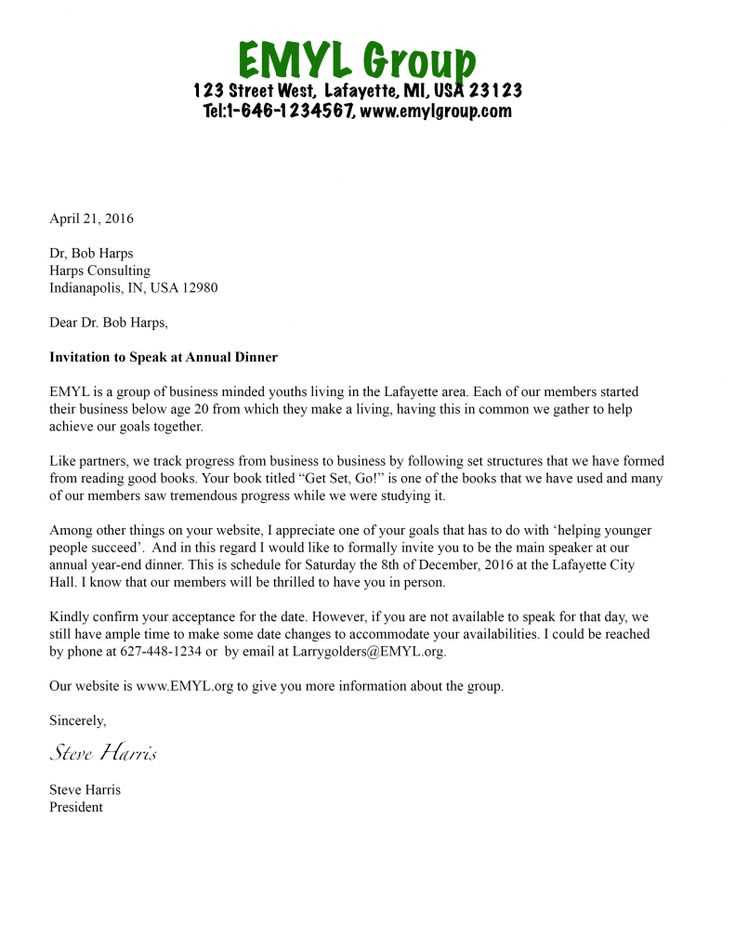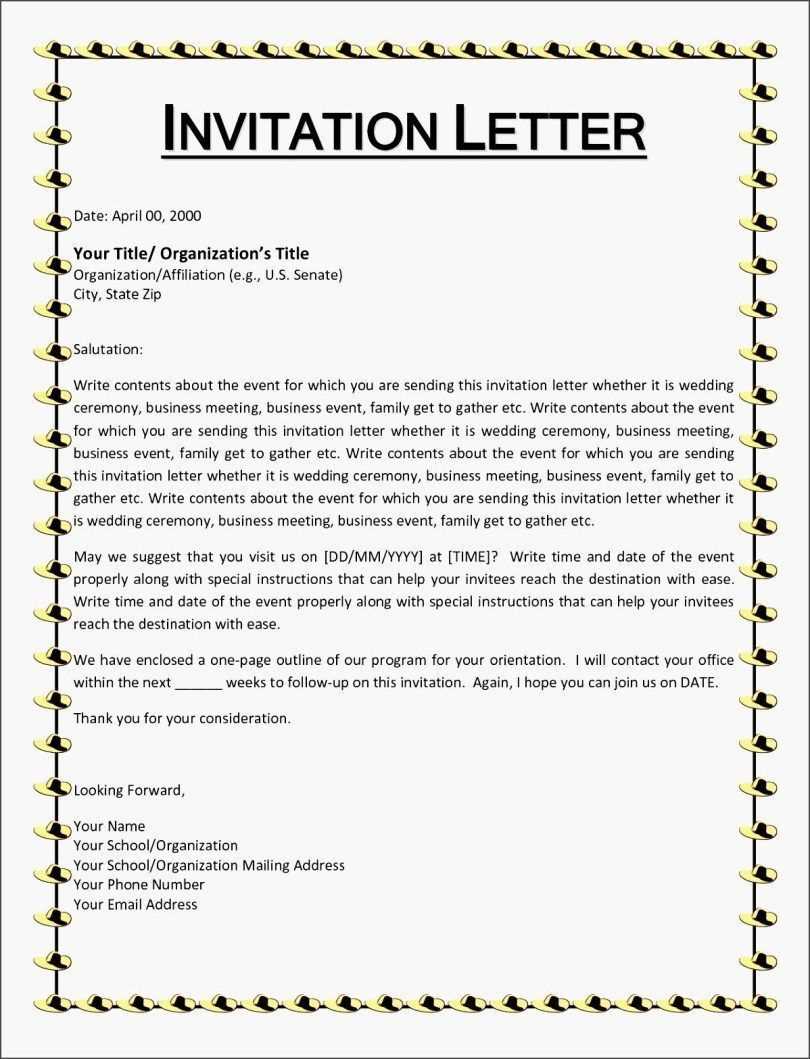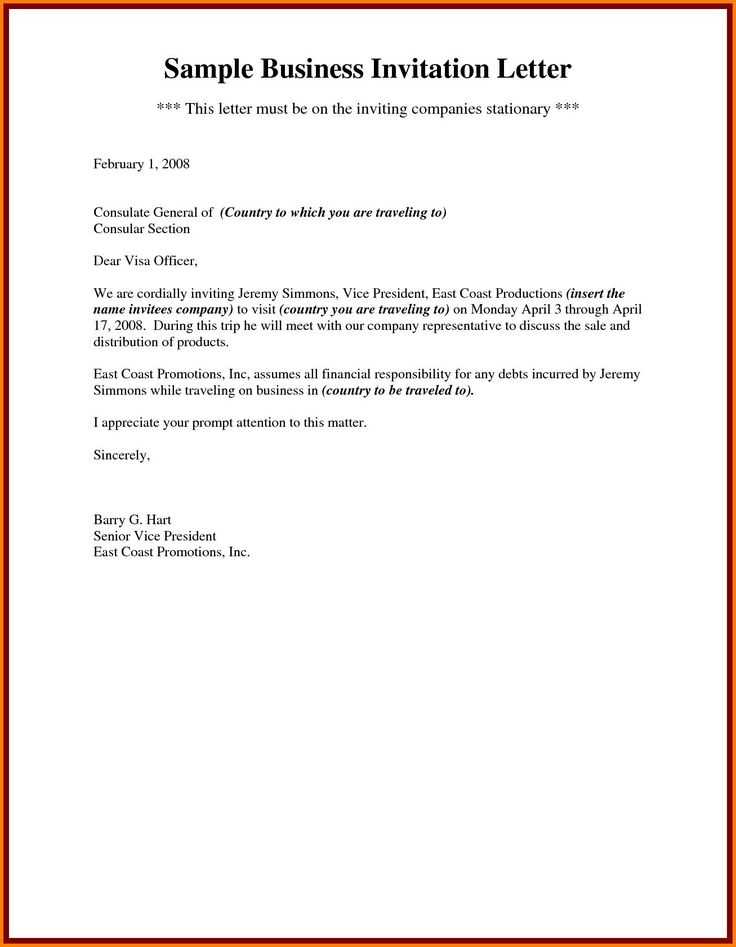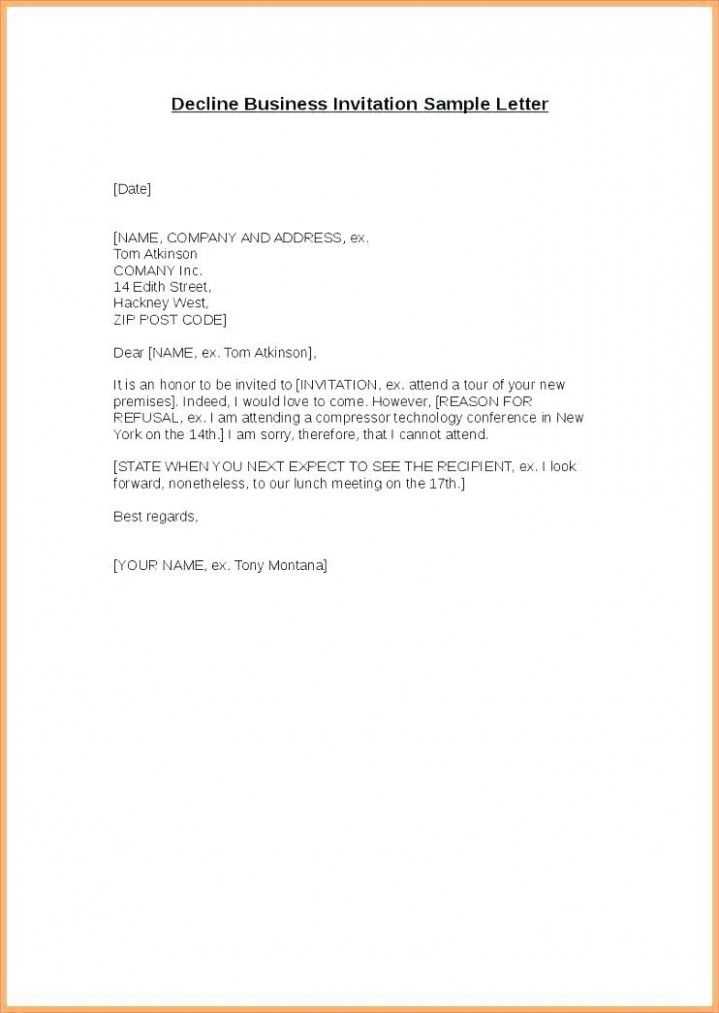Invitation Letter Template for Your Upcoming Event

Crafting the right communication is crucial when inviting others to join your special gathering. A well-structured message sets the tone and ensures clarity, making recipients feel valued and excited. It’s important to balance professionalism with warmth, showing that you appreciate their presence while providing all necessary details.
In this guide, we will explore how to design a clear and inviting message that leaves a lasting impression. From the essential components to the best practices, you’ll learn how to create a message that captures attention and encourages a positive response.
Effective communication is the key to successful invitations. With the right approach, your message will not only inform but also inspire others to attend and enjoy the occasion you’ve planned. Let’s dive into the best strategies for achieving this.
Why Invitation Letters Matter for Events
Effective communication plays a pivotal role in setting the tone for any gathering. A well-crafted message can build anticipation, encourage attendance, and convey a sense of professionalism. It provides recipients with the necessary information in a clear and engaging manner, making them feel included and valued. Without this important step, even the most well-planned gatherings may not achieve the desired level of participation.
Benefits of Crafting Clear Messages

When you take the time to design a thoughtful and well-organized message, it creates a strong first impression. It highlights the significance of the occasion, ensures that everyone understands the logistics, and helps establish credibility for the host. Furthermore, it allows the recipient to feel more comfortable attending, knowing exactly what to expect and how to prepare.
Key Information to Include
To make sure your communication is effective, it’s crucial to provide the right details in an accessible and inviting way. Here’s a table summarizing the most essential components:
| Key Element | Purpose |
|---|---|
| Date and Time | Helps recipients plan and confirm availability |
| Location | Ensures attendees know where to go |
| RSVP Information | Allows organizers to track attendance |
| Purpose or Theme | Sets expectations for the type of gathering |
| Contact Details | Provides a way to reach out with questions |
By including these key elements, you provide clarity and enhance the overall experience for your guests. A clear and compelling message ensures a higher likelihood of attendance and helps set the right mood for the occasion.
Key Elements to Include in Your Invitation
When reaching out to guests, it’s essential to ensure that your message contains all the necessary details to guarantee a smooth and successful experience. Including the right components not only informs but also excites the recipient, setting the stage for the upcoming occasion. A well-crafted communication gives clarity and directs attention to what truly matters.
Clarity and precision are vital. By including essential information in an easy-to-understand format, you make it easier for your guests to decide whether they can attend. A compelling message should provide all logistical details, highlight the importance of the gathering, and make guests feel special.
Here are the most important aspects to consider:
- Date and Time: Clearly state when the gathering will take place, ensuring your guests can plan accordingly.
- Location: Mention the venue or platform for virtual gatherings, so attendees know exactly where they should be.
- RSVP Instructions: Provide a way for guests to confirm their attendance and allow you to plan effectively.
- Purpose or Theme: Share the reason for the gathering or the atmosphere you’re aiming to create, helping recipients understand what to expect.
- Additional Information: Include any other relevant details such as dress codes, parking instructions, or items to bring.
By ensuring that all of these elements are present and clear, you’ll increase the likelihood of positive responses and create a smooth experience for all those involved.
How to Personalize Your Event Invitations
Personalization is one of the most effective ways to make your communication stand out and engage your recipients. Tailoring each message makes the recipient feel special, showing that you’ve put thought into the details. By focusing on personalization, you can create a stronger connection and increase the likelihood of attendance.
Adding a Personal Touch

To make your message feel more personal, consider addressing your guests by name and referencing their relationship to the occasion. For example, if you’re inviting a close friend, using casual language and adding a personal anecdote can enhance the tone. On the other hand, for formal gatherings, a respectful tone and acknowledgment of the guest’s significance to the gathering will resonate well.
Customizing the Message Content
Tailoring the content is also crucial. If the gathering has a particular theme or purpose, briefly mentioning how the guest’s presence will contribute to it makes them feel involved. Whether it’s a birthday party, a business gathering, or a celebration of a milestone, referencing specific details that relate to the individual makes your message feel more relevant and thoughtful.
By adding these personal touches, you transform a generic message into a meaningful invitation that shows genuine appreciation for the recipient.
Common Mistakes to Avoid in Invitations
When crafting a message to invite others to your gathering, certain mistakes can easily diminish the effectiveness of your communication. It’s important to avoid common pitfalls that can lead to confusion, missed opportunities, or even cause guests to feel disconnected. By being mindful of these mistakes, you can ensure that your invitation is both clear and compelling.
Common Pitfalls to Avoid
- Unclear Details: Failing to provide specific information such as date, time, or location can cause confusion and hesitation in your guests.
- Overly Complicated Language: Using jargon or overly formal language can make your message harder to understand, potentially deterring some guests from attending.
- Too Much Information: While it’s important to include necessary details, overwhelming your guests with excessive information can lead to disengagement.
- Missing RSVP Instructions: Without clear RSVP instructions, guests might forget to confirm their attendance, leaving you uncertain about who will be there.
How to Prevent These Mistakes
- Be Concise: Keep your message focused on the most important details, providing just enough information to make the process clear and easy.
- Check for Errors: Before sending your message, proofread it to ensure there are no spelling or grammatical errors that could make it look unprofessional.
- Provide Contact Information: Always offer a way for your guests to ask questions or seek clarification if needed.
By avoiding these common mistakes, you’ll craft a more effective and inviting message that encourages a positive response and a successful gathering.
Design Tips for a Professional Letter
The design of your communication plays a significant role in how it is received. A well-organized and visually appealing format not only makes your message more readable but also enhances its professionalism. Paying attention to layout, font, and color choices can leave a lasting impression and convey the right tone for your gathering.
Structure is crucial when aiming for a professional look. A clean, straightforward layout with clear sections helps guide the reader’s attention to the most important details. Avoid clutter and ensure there is plenty of white space around the text to make the content easy on the eyes.
Here are some tips to keep in mind when designing your message:
- Choose a Clean Font: Opt for professional, easy-to-read fonts such as Arial, Calibri, or Times New Roman. Avoid overly decorative fonts that can make the text hard to follow.
- Use Consistent Formatting: Stick to one or two font sizes for headers and body text, and keep your alignment consistent to maintain a polished appearance.
- Limit Color Usage: While color can enhance your message, overuse can be distracting. Stick to a simple color scheme that complements the tone of the gathering.
- Include a Clear Heading: Make sure your subject or title stands out at the top, drawing attention to the purpose of your message immediately.
By following these design principles, you can create a message that not only looks professional but also ensures that your recipients have a positive and easy experience when reading your details.
Best Practices for Sending Invitations
Ensuring that your communication reaches the intended recipients effectively is just as important as crafting a well-written message. How and when you send your details can greatly impact the success of your gathering. Following best practices in distribution ensures that your guests receive the message in a timely manner and have all the information they need to attend.
Timing is Key
Sending your message with adequate notice is crucial. Sending it too early can cause it to be forgotten, while waiting until the last minute may leave guests with little time to plan. A good rule of thumb is to send your details at least 3-4 weeks in advance, giving your guests ample time to respond and adjust their schedules.
Choosing the Right Medium

Consider your audience when selecting the method of communication. For professional gatherings, email or formal postal mail may be more appropriate, while personal or informal events can be shared through social media, messaging apps, or even a phone call. Be sure to choose a method that aligns with the tone of the gathering and ensures that your guests receive the message promptly.
By following these best practices, you can enhance your chances of getting positive responses and ensure that your guests are well-prepared for the occasion.